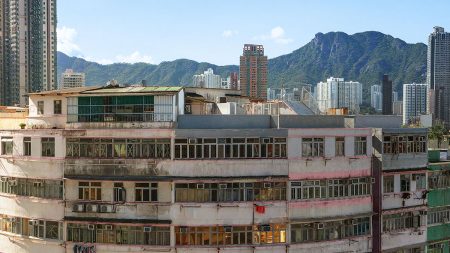Summary dismissal: consider suspending the employee first
Slotine explains how recent Hong Kong case law has clarified the difference between statutory suspension from employment and contractual suspension from duties.
DOWNLOAD PDF >
Summary dismissal of employees in Hong Kong is a fraught area of employment law. It is only permitted in particular circumstances. Employers must follow disciplinary procedures meticulously and must gather solid evidence to avoid claims for wrongful dismissal. Having said that, circumstances might require quick decisions. Employers may not always take the correct action and summary dismissal done wrong can have significant consequences for the employer.
To avoid making the wrong decisions that may lead to litigation against the employer, it might be prudent to consider intermediary steps before or instead of summary dismissal. Suspending the employee to investigate the matter properly could prevent costly and lengthy litigation.
Following the case of Lengler Werner v. Hong Kong Express Airways Ltd [2021] HKEC 2078, this article puts the spotlight on the employer’s right to suspend employees under Section 11 of the Employment Ordinance (Cap. 57) (EO).
This article provides an outline of the regime applicable to the suspension of employees in Hong Kong. Its purpose is by no means to be exhaustive but to provide guidance to employers and employees.
Right to suspend employees from employment under Section 11 of the EO
Circumstances in which an employee can be suspended
Section 11(1) of the EO allows for three circumstances under which an employee may be suspended.
| 1 | 2 | 3 |
| As a disciplinary measure for any reason for which the employer could have terminated the contract of employment for summary dismissal under Section 9 of the EO. | Pending a decision by the employer as to whether it will exercise its right to terminate the contract of employment for summary dismissal under Section 9 of the EO. | Pending the outcome of criminal proceedings against an employee arising out of or in connection with his employment. The degree of connection between the criminal allegations and the employment is not defined. Section 11 of the EO is therefore open to a broad interpretation; almost any criminal allegation against an employee may be interpreted as “connected” to the employment. |
For the sake of completeness, we refer to the circumstances in which an employer may terminate a contract of employment without notice or payment in lieu:
- if an employee, in relation to his employment: wilfully disobeys a lawful and reasonable order, misconducts himself, such conduct being inconsistent with the due and faithful discharge of his duties; is guilty of fraud or dishonesty, is habitually neglectful in his duties; or
- on any other ground on which he would be entitled to terminate the contract without notice under common law.
Nature of obligations suspended during the suspension period
In Lengler Werner v. Hong Kong Express Airways Ltd [2021] HKEC 2078, the judge considered the wording of Section 11 of the EO. The court concluded that suspension of employment cannot be a partial suspension of duties but must be the complete suspension of all the rights and obligations of the parties to the employment contract.
In Lenger Werner, the respondent, a pilot, was suspended from flying duties, but he continued to receive his basic salary and other allowances under his contract. The court held that his suspension was in fact not a Section 11 suspension.
For an employee to be suspended under Section 11 of the EO, the employee must not be required to do any work. In return, the employer is not required to pay the employee.
In coming to this conclusion in Lenger Werner, the court referred to Wu Man Kwong v Asia Culture Broadcast Co.Ltd unrep, HCLA 1/1998. In Wu Man Kwong, the court considered the case of a production supervisor who was suspended from his duties but whose salary was reduced by one-third. The court expressly pointed out that a suspension of duties with a reduced salary is very different from a suspension under Section 11 of the EO.
Duration of suspension
Section 11(1) of the EO states that the duration of the suspension may not exceed 14 days in total, except where the suspension is pending criminal proceedings that are not concluded in 14 days. In such a case, the suspension may remain in force until the outcome of the criminal proceedings is known.
Consequences of suspension under Section 11 of the EO: the right of the employee to terminate employment at any time
Section 11(2) of the EO expressly states that a suspended employee may terminate his contract of employment with immediate effect, without notice or payment instead of notice, at any time during the suspension. The employee will still be entitled to all accrued and pro-rata statutory benefits payable under the EO, such as pro-rata leave or end of year payments. However, the employee will not usually be entitled to severance or long-service payments.
The right of the employee to terminate his employment under Section 11(2) of the EO was also under the spotlight in Lenger Werner. Since the suspension was not a Section 11 suspension, the employee could not rely on Section 11(2) of the EO to tender his resignation and terminate his employment without notice or payment in lieu.
Since the suspension was only a suspension of duties, the employee would have to resign in accordance with the provisions of the employment contract and the EO.
Right to suspend employees when there is an express contractual right to do so under the employment contract, employee handbook or other internal policies
Validity of a suspension clause contained in an employment contract or employee handbook
In Lenger Werner, the employment contract allowed the employer to suspend an employee from work during any investigation or disciplinary or grievance proceedings for a period not exceeding 14 days. The airline’s employee handbook further stipulated that an employee could be suspended from part of his duties pending disciplinary action.
Mr. Werner’s flying duties were suspended for about six weeks. The High Court recognised the validity of the suspension provisions contained in the contract and the handbook, giving the airline the power to suspend the employee pending the outcome of disciplinary proceedings.
In practice, it is prudent for employee handbooks to contain disciplinary procedures allowing employers to suspend employees pending disciplinary proceedings.
Suspending an employee for more than 14 days without contractual provision
Occasionally, a 14-day suspension may not be sufficient to conclude the disciplinary investigation. Section 11 of the EO limits suspensions to 14 days and is silent on what can be done if the 14 days are insufficient. If the suspension is maintained over 14 days, it may be considered by the employee as constructive dismissal allowing the employee to terminate the contract.
Employers should ensure that their employment contracts or employee handbooks contain a suspension clause that expressly stipulates the maximum duration of the suspension.
In case there is no contractual right for the employer to suspend the employee over 14 days, the employer should try to reach an agreement with the employee to take leave with or without pay following the 14 days. Such leave should be for a reasonable time.
Key takeaways
If an alleged misconduct arises, the employer must proceed correctly to avoid any claims from the employee.
- Conduct a preliminary investigation to gather as much information as possible about the alleged misconduct before suspending the employee.
- Review all the organisation’s policies and procedures and follow the steps set out in the employment contract and the employee handbook to avoid allegations of discrimination or unfair treatment.
- Conduct the disciplinary proceedings strictly according to the policies. By following the correct procedure, the employer ensures that the steps taken are binding and enforceable.
- Adequately inform the employee about the reasons for the suspension, the period of suspension and whether any wages will be paid during the period of suspension. Keep proper records of all proceedings, hearings and evidence.
- Consider suspension before summary dismissal. When suspension is applied, clarify whether it is a Section 11 complete suspension or a mere partial suspension of duties.
- Carefully consider whether Section 11 circumstances are present and whether the employee’s conduct justifies suspension. If not, suspension of duties must be permitted contractually.
The law in this respect is complex. The information provided in this article does not, and is not intended to, constitute legal advice and should not be relied upon as such.
For professional legal advice, please do not hesitate to contact us.



